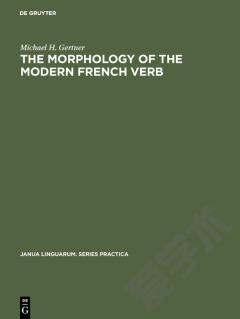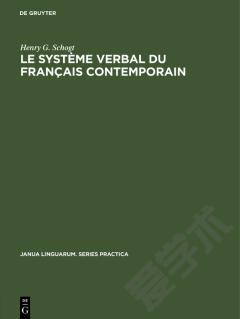Sociolinguistic Variation in Contemporary French.
This volume, co-edited with Franceâs foremost sociolinguist, Francoise Gadet (Universite de lâOuest de Paris/Nanterre), and with Nigel Armstrong from the University of Leeds, breaks new ground by bringing together researchers from different traditions working in different linguistic domains. In introductions to the three main sections, the co-editors of the volume contribute overviews of their respective areas of expertise, namely phonological variation and leveling in hexagonal French and elsewhere, syntactic and stylistic variation and lexical variation and semantic change. These set the scene for the more focused studies presented in the individual chapters. A unifying theme of the volume is the role of external sociolinguistic factors in both variation and change. From a diatopic perspective, varieties of French in France, Belgium, Switzerland, Africa and Canada are considered, mainly with respect to phonological variation (Section I) but also with respect to syntactic and lexical features (Knutsen in Section II on French in the Ivory Coast; Dostie in Section III on Canadian French). The intersection between social factors and phonological change is explored in Armstrong and Boughtonâs chapter on dialect leveling in hexagonal French. Hambyeâs paper on word final consonant devoicing in Belgium is original in highlighting diastratic as well as regional factors, while variation with age is the focus of both Violin-Wigentâs and Pustkaâs papers on the phonological features of Southern France. Millerâs study of style-shifting in Swiss French is unique in the volume in focusing on prosody and finally, a contrast between English and French is drawn in Pooleyâs review of the impact of an influx of immigrants on local varieties. Many of these studies paint a similar overall picture: that European French is undergoing standardization or is tending towards a supra-local norm, a norm which is not necessarily that of classical standard French but has currency over the region as a whole and is not restricted to one locality. Sociostylistic and syntactic features are the focus of a number of the papers in Section II. Bilger and Tyneâs study of syntax across speech styles in UK anglophone learners focuses on the use of parce que while Rossi-Gensane compares the use of non-standard non-finite forms in the spoken language, in newspapers and in novels. Knutsen examines relative clauses in the French spoken in the Ivory Coast, while Buson traces the perceptions of pre-teenagers with respect to stylistic variation and relates these to social class. Finally, in Section III, we look at the impact of social and stylistic factors in lexical variation and semantic change. Dostie looks at diatopic variation, suggesting that the degree of pragmaticalization of discourse markers in Quebec French may vary from one region to another. Beeching, on the other hand, examines the extent to which sociosituational variation has contributed to the rise in distributional frequency and pragmaticalization of discourse-marking bon in modern hexagonal French. The social and economic factors behind the shift in meaning of fortune from âluckâ to âwealthâ, along with the resistance to change evident in metalinguistic works across the centuries, form the subject of Courbonâs highly detailed study of this lexical item which concludes the volume. Written entirely in English, the volume allows scholars of sociolinguistic variation access to work which might otherwise appear only in French and was reviewed as â a most valuable mise au point on the variability of contemporary French, synthesising French and Anglo-American methods and perceptions in a highly creative wayâ (Anthony Lodge, St. Andrews University) and âAn interesting and diverse collection of articles. This will offset the commonly heard claim that no one does quantitative sociolinguistics in Franceâ. (Naomi Nagy, University of Toronto).
{{comment.content}}








 京公网安备 11010802027623号
京公网安备 11010802027623号